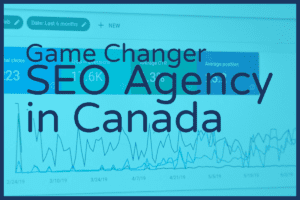 Cold calling. That necessary evil of sales, in which new customer prospects are called in masses and given a standard sales pitch in the hopes that the message will reach those few whose needs may coincide with the call – that traditional method of selling is broadly on the decline these days.
Cold calling. That necessary evil of sales, in which new customer prospects are called in masses and given a standard sales pitch in the hopes that the message will reach those few whose needs may coincide with the call – that traditional method of selling is broadly on the decline these days.
But is that truly because cold calling is a lost and irrelevant art form in the Information Age, or is it that most sales organizations haven’t adapted to the more efficient way of doing things? We think cold calling still has a place in your sales team, if it’s approached the right way.
Cold Calling Success with Online Marketing
The Fall of the Call
It’s not like it used to be, and that’s a good thing. Since time immemorial, sales people have spent large swaths of time calling prospects blindly. These methods require high volumes; for every hundred calls, maybe single-digit percentages of those calls will turn into customers (as low as one customer out of every hundred leads!).
Not only are buyers not interested in taking calls like they used to, but they’re supported by the widely adopted No Call List. And those same phones that used to take cold calls now have access to as much information about your products and services as you might be able to provide over a sales cold call.
Always Add Value
Cold calling has always brought with it a vague sense of terror on the part of the caller. Who wants to interrupt a potential customer with a sales call that they didn’t ask for? This hesitation, while not obvious for those confident in their products, leads to ignored calls and wasted time.
The key is to not waste your potential customer’s time. Just don’t do it. The old sales maxim of “always be closing” should be replaced by “always add value.” And this goes beyond the normal sales bullet points to a whole new level; to really make cold calling more worthwhile, you have to know the message that’s really going to resonate with your leads.
And what better way to build value out of your cold calling by ensuring your calls point toward your online presence? This gives an informational backbone to your call, and breathes an additional life into your already-existing online marketing campaign.
Warm Calling?
If the first two points are about building the strength of your cold calling in the face of its declining prevalence, then this third point is about adding even more value by partnering cold calling with your online marketing efforts.
This partnership is where the real opportunity lies as businesses try to think of ways to make cold calling work for them. There’s a wealth of information at your company’s fingertips in the form of potential client websites, LinkedIn, Twitter profiles, et cetera. All this is information to help you inform the way you approach potential clients.
The sales industry is calling this information revolution “warm calling,” rather than cold calling. You’re warming up your call by first ensuring that you have all the information you can get that will allow you to target your call to the needs of your customer, ultimately not wasting your time or the time of those you’re calling.
As we move into an age of unfettered access to all kinds of information, we can’t expect cold calling to exist like it has in past decades. That sort of shotgun approach to sales hasn’t survived the Internet age, and we should all be glad as a result. Instead, we need to be thinking about how best to partner our sales calling with this access to information to ensure we’re creating the most value for ourselves as well as our future customers.



